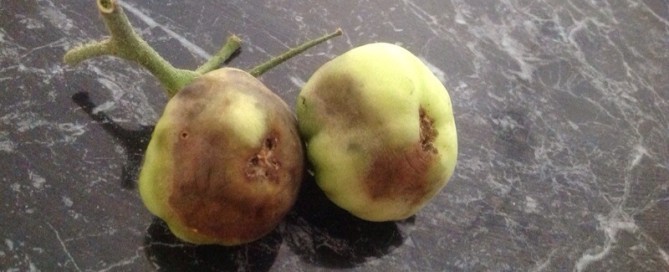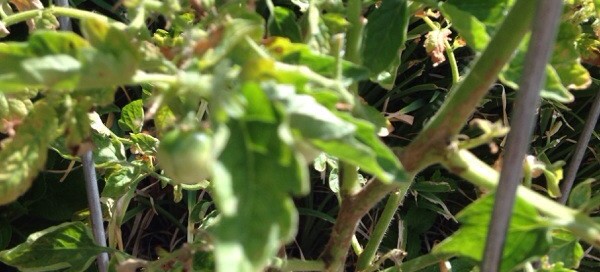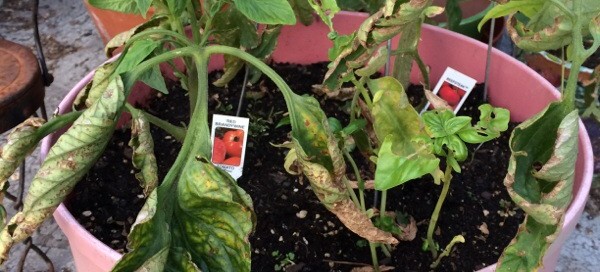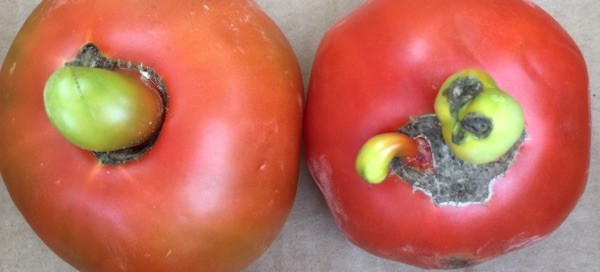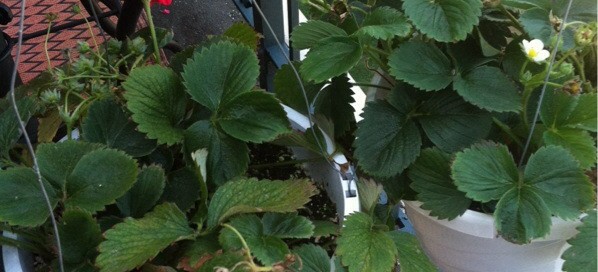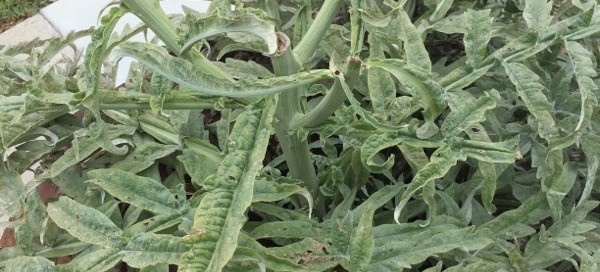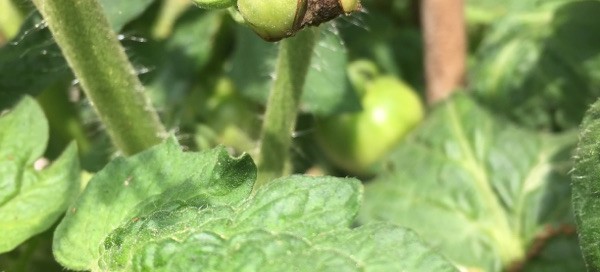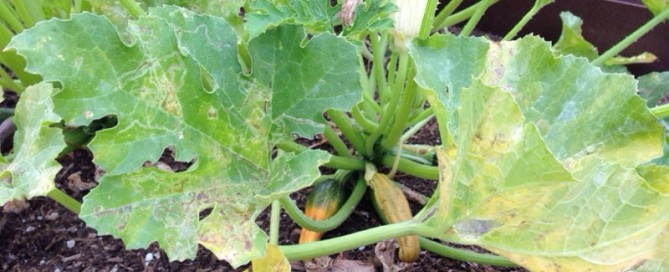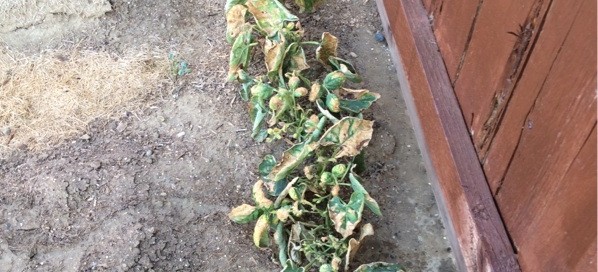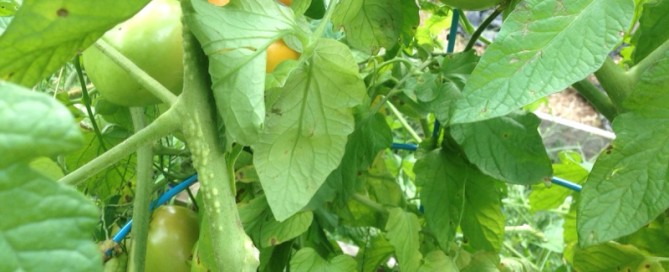Late Blight
This looks like tomato blight, likely late blight, but we cannot be sure from this distance. There are several types of blight, they may start at the top of the plant or at the bottom and work their way up. Late Blight, Phytophthora infestans, is an odd organism in that it behaves somewhat like a bacteria, but also like a fungus. It will eventually also attack the main stems and can progress very rapidly. Some splash up from the soil surface and others come in on insect feet. Sadly, there is no treatment for a plant in this condition. We suggest you dispose of this plant and its soil in the trash, not the compost bin, and start anew. The entire plant should be pulled and put in the garbage. Make sure the fruit is taken too. Please get a second opinion from you local Extension office or garden center for confirmation by taking a few leaf samples in a baggy so that they can identify it in hand. We wish we had better news for you.
